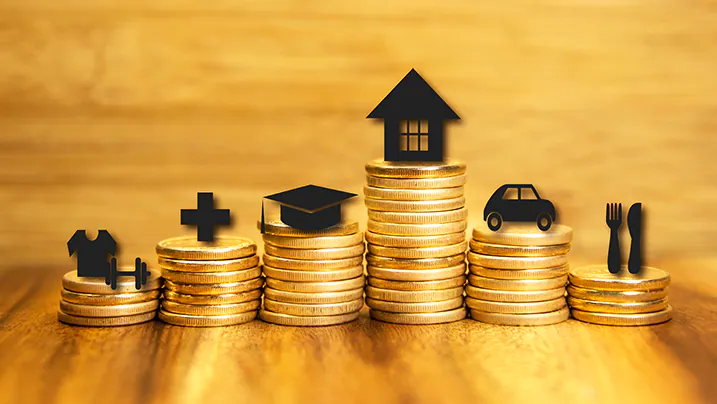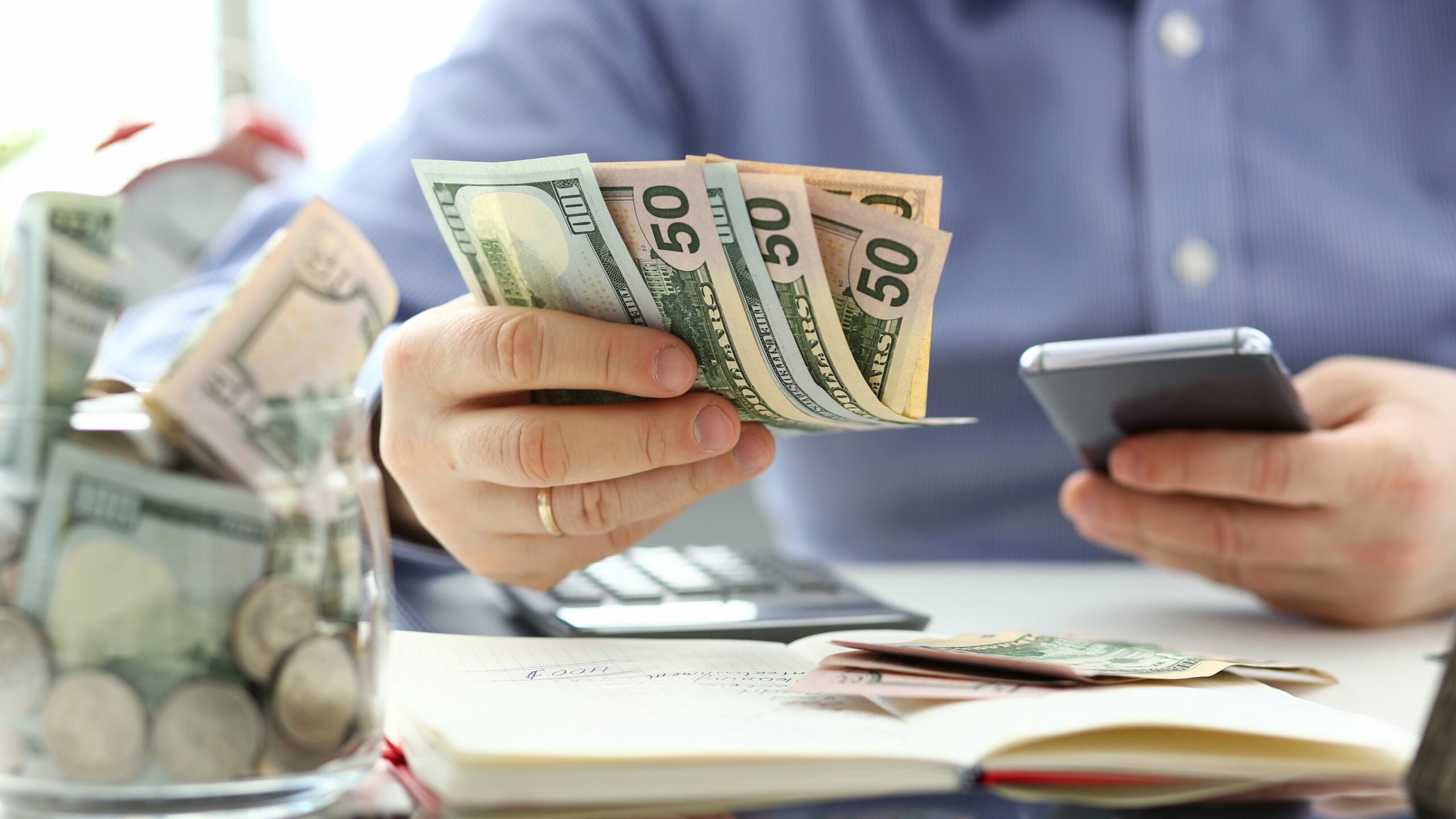A personal loan is when the borrower receives a lump sum of cash and is required to pay the loan with regular payments. Different things may be done with a personal loan. Based on the borrower’s creditworthiness, there is a set interest rate that is applied to the loan.
In general, personal loans are unsecured loans. The only requirements from the lender are that you have good credit and pledge in writing to repay the loan as specified. Since there is no collateral to back up the loan in the event of a failure, lenders are taking on greater risk than they would with a mortgage or vehicle loan.
Therefore, compared to secured loans, personal loans often have higher interest rates. You may anticipate a cheaper interest rate from the lender when your credit score rises. You might be able to get a personal loan with terrible credit even if your credit score isn’t as good as you’d like. You’ll probably have to pay a greater interest rate than other borrowers, though.
When is getting a personal loan your best bet?
Imagine if the Truman administration designed your kitchen or that you wanted to consolidate your debt. You may be able to obtain the money you need through a personal loan. As long as you pay the money as agreed, the majority of lenders don’t care how you use it.
A personal loan can help you achieve your objectives if you have a strategy for how you’re going to use the money and know how you’re going to pay it back. You should opt for a loan with “streamlined approval” if you need the money right now.
This indicates that you won’t have to wait long to get your loan money. A personal loan can help you get over a financial hurdle, even when you want cash quickly, because some loans are funded the same day.
What purposes should personal loan serve?
It’s critical to manage your debt, just as with any loan. The objective is to use a personal loan to help you become more financially stable when it is repaid. Here are a few justifications for obtaining loans: Consolidating debt: The interest rates on credit cards are often higher. With a personal loan, you can combine your debts with high interest rates into one loan with lower rates.
Home Improvements: Some home improvements can raise the value of your house. A home equity line of credit can be a better financing choice if your house has equity. Paying for professional certifications, education, and training can help you progress in your career and increase your chances of getting a promotion or a higher-paying position. Unexpected costs Everyone should keep three to six months’ worth of spending in an emergency savings account. If you don’t, a personal loan may be able to help you pay for a sudden financial emergency or recover from an expensive annoyance.
What standards apply to the best personal loan?
The range of loan alternatives available may surprise you. The greatest loans share these three characteristics, regardless of whether you have good credit or are trying to raise it:
The lowest possible interest rate
A loan with a low interest rate is excellent. A loan’s interest is computed as a percentage of the entire amount borrowed. The more money you save repaying the loan, the lower the interest rate will be. Let’s imagine you want to obtain a loan with a five-year term and need to borrow $20,000 to replace the roof on your home. You have Lender A and Lender B as two potential choices.
We have outlined these two hypothetical lenders’ interest rates and how they might affect the price of your loan below. Savings can be achieved with even a minor percentage improvement. It is obvious that you may save money over the course of the loan by choosing the lender with the lowest interest rate. You may use this cash in other ways, including investing in the future.
Have you had credit issues?
It will probably have a higher interest rate. If this applies to you, you have two choices. You can work to improve your credit score and postpone loan applications until you are in better shape. The other alternative is to obtain a loan now and afterwards refinance your personal loan (when your credit score is higher and you can get a better rate).
Loan conditions you can live with
The amount of time you have to pay back a loan in full is known as the “loan term.” Some borrowers choose longer loan terms in order to maintain affordable monthly payments. However, the total amount of interest you pay increases the longer a loan is held. Find the personal loan term that offers the shortest term with the lowest payment. The best loans match your financial situation and timetable.
Low Cost
A superb personal loan should also have no costs or very little expenses. Fees may be deceptive. Imagine that a lender gives you a cheap interest rate but charges a lot of fees. In the end, that loan can be more expensive than one with a somewhat higher interest rate but no fees.
The best personal loan providers avoid origination fees and keep other costs, such as prepayment and late fees, to a minimum. For instance, origination fees are frequently charged by lenders to defray the expense of processing and distributing your loan. Origination fees can range between 1% and 8% of the loan amount.According to the aforementioned example, you could have to pay between $200 and $1,600 in origination costs if you borrow $20,000 to fix a roof.
How to find the most affordable personal loan rate?
Follow these three steps to obtain the best personal loan rate:
- Maintain a high credit rating.
- A credit score of 800 or more is considered outstanding.
- The better your credit score is, the better your interest rate will be.
- I got a co-applicant.
- If your credit score isn’t high enough to get you a lower interest rate, a co-applicant with great credit might help you get one.
- To get the best deal, comparison shop.
- To obtain a loan, there are several financial institutions.
- Loans are available through conventional banks, credit unions, and online-only banks.
- By doing some research, you can find a lender that is providing the greatest rates.
- Many provide a prequalification tool online, so you may get a rate without lowering your credit score.
- Lenders occasionally run specials and provide momentary savings.
Obtaining a personal loan
The application process for a personal loan is the same whether you go to a bank, a credit union, or an online personal loan provider.
The steps are as follows:
Gat paperwork
The lender will probably want the same documentation everywhere you apply. Having things ready before you apply will speed up the procedure and relieve a lot of your worries.
This is what you require:
- Identification documentation
- evidence of address.
- A breakdown of monthly costs
Proof of the value of your collateral, if you’re requesting a secured personal loan. The lender may inquire as to why the loan needs the money regardless of whether it is a secured or unsecured personal loan. Some personal loans are reserved for specified uses, such as helping to consolidate debt, although these loan types are not really personal.
Retail Lenders
Spend some time looking around for the best lender. The “soft” credit check used by lenders to make loan choices has no effect on your credit score. This light credit check (like an outstanding instalment loan) lets the personal loan provider see your credit history, which may include credit card debt and other problems.
Look for lenders who specialise in personal loans for those with fair or poor credit if your credit score isn’t quite great. Fill out the whole loan application and send the lender the required papers without omitting anything. If you follow these steps, you should learn quickly whether your loan has been accepted. Some of the better lenders will notify you of the status of your application within minutes.
Review Loan Offers
Loans of the same type can be compared side by side. If you’ve applied for an unsecured loan, evaluate offers only from other unsecured lenders. Additionally, only compare secured loan offers if you have already applied for them.
Observe the following:
- The lowest annual percentage rate
- A timeframe for payments that is affordable for you.
- Loan amounts according to your borrowing requirements.
- The least expensive loan fees (ideally, you’ll locate a loan with no origination cost or prepayment penalty).
- Benefits such as loan deferral when unemployed.
Be devoted to a lender
The first “hard” credit check is not performed by a lender until you tell them you wish to move forward with a loan. Therefore, even if you submit an application to five banks, only the bank you choose to cooperate with performs a rigorous credit check. A hard credit check is a more thorough investigation of your credit history that enables a personal loan provider to confirm that an applicant has a minimum credit score criteria and a history of on-time bill payments.
Your credit score may go down after the rigorous credit check, but usually by fewer than five points. Your score should return to its pre-loan level after a few months of consistent payments.
Note: If a low credit score prevents you from receiving a loan offer that is suitable for you, think about investing time in raising your credit score.
Increasing your score will only be beneficial in the long term. Your FICO® score may be improved by making little adjustments like lowering your credit usage, paying your payments on time, and only applying for credit when absolutely necessary.
Affirm loan agreements
Most lenders let you sign documents electronically, whether you’re dealing with an offline financial institution or an internet lender. Before signing, give the documents a careful reading. After you sign, you have to follow everything written in the four corners of the contract.
Patiently await loan funds
One to fourteen days after the loan is approved, the money often reaches your bank account. When shopping for a loan, find out from lenders how swiftly they provide funds if you need the money right away. If you really cannot wait, be sure to only engage with a lender who guarantees a prompt transfer of cash.
How many personal use loans are permitted?
In the end, you are allowed to have several personal loans. There is no restriction on the number of loans you can have from the same lender. However, certain lenders may place a limit on the number of personal loans you can have. Your debt-to-income ratio, credit score, and other characteristics will be taken into account by the lender when calculating how many loans you may obtain and how much you are eligible for. Your credit score may be affected if you have an excessive number of loans. It will be more challenging to get approved for new credit or a better rate as a result.
What happens if your application for a personal loan is denied?
The first thing to do if your personal loan application is rejected is to ascertain why. If your credit score doesn’t satisfy the requirements, you’ll often be rejected. You can have a low credit history, bad entries on your credit report, or excessive credit card bills. Your income not meeting the minimal standards or having a high debt-to-income ratio might be another factor.
Other elements, such as your job history, cash flow history, and accessible assets, could affect loan acceptance. If you are rejected, work on raising your credit score and credit history. Your credit score is mostly based on how well you handle payments on schedule. Maintain low credit card balances and make use of Pay off your credit card debt and request a limit increase from your credit card issuer to help with usage.
Keeping away from too many harsh inquiries might also help you build credit. You’ll be more likely to get approved for a personal loan after raising your credit score.












